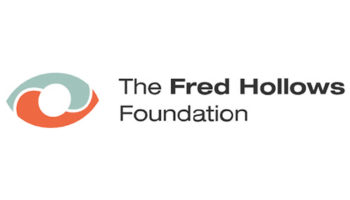Join a powerful, unprecedented alliance for better eye health for all.
Join IAPBMagnitude and Projections
Country Map & Estimates of Vision Loss
Age-std prevalence of all vision loss by country 2020
(all ages, males & females)
Hover over the country to access data. Map best viewed on desktop.
Skip mapKey
Loading...
Close
Select a super region below
Select a region below
- Andean Latin America
- Australasia
- Caribbean
- Central Asia
- Central Europe
- Central Latin America
- Central Sub-Saharan Africa
- East Asia
- Eastern Europe
- Eastern Sub-Saharan Africa
- High-income Asia Pacific
- High-income North America
- North Africa and Middle East
- Oceania
- South Asia
- Southeast Asia
- Southern Latin America
- Southern Sub-Saharan Africa
- Tropical Latin America
- Western Europe
- Western Sub-Saharan Africa
The 10 countries with the highest number of persons with vision loss, 2020.
As may be expected, these countries also have the largest populations. China and India together account for 49% of the world’s total burden of blindness and vision impairment, while their populations represent 37% of the global population.
| Country | Total with vision loss | Blindness | Moderate to severe | Mild | Near | Population |
|---|---|---|---|---|---|---|
| India | 275.0M | 9.2M | 79.0M | 49.1M | 137.7M | 1,422M |
| China | 274.3M | 8.9M | 51.9M | 57.7M | 155.7M | 1,426M |
| Indonesia | 34.9M | 3.7M | 10.8M | 11.5M | 8.9M | 265M |
| Russia | 28.6M | 0.6M | 8.0M | 3.7M | 18.5M | 146M |
| Brazil | 26.6M | 1.8M | 10.0M | 8.3M | 8.6M | 217M |
| Bangladesh | 26.3M | 0.9M | 7.5M | 4.2M | 14.0M | 161M |
| Pakistan | 26.3M | 1.8M | 8.5M | 6.0M | 10.1M | 226M |
| Nigeria | 24.3M | 1.3M | 5.3M | 7.8M | 9.9M | 226M |
| USA | 16.4M | 0.6M | 6.7M | 4.6M | 4.4M | 331M |
| Mexico | 16.0M | 0.5M | 4.7M | 4.4M | 6.4M | 132M |
The 10 countries with the highest rates of vision loss, 2020
The comparative age-standardised prevalence rate can be helpful in providing a comparison of which country experiences the highest rates of vision impairment, regardless of age structure. India is the only country to appear on both ‘top 10’ lists, as it has the most vision impaired people, as well as the 5th highest overall rate of vision impairment.
| Country | Blindness | Moderate to severe | Mild | Near |
|---|---|---|---|---|
| Nepal | 0.5% | 5.1% | 2.8% | 18.8% |
| United Rep. of Tanzania | 1.1% | 3.2% | 4.5% | 16.3% |
| Niger | 1.2% | 3.6% | 4.8% | 13.2% |
| Zimbabwe | 0.8% | 3.0% | 3.7% | 15.2% |
| India | 0.9% | 6.6% | 4.0% | 11.3% |
| Lesotho | 1.1% | 2.6% | 3.7% | 15.0% |
| Eswatini | 1.0% | 2.5% | 3.5% | 14.5% |
| South Africa | 0.8% | 2.3% | 3.5% | 14.9% |
| Namibia | 0.8% | 2.5% | 3.5% | 14.2% |
| Botswana | 1.0% | 2.5% | 3.4% | 14.1% |
Note: Country estimates rely on the availability of population-based data. In some regions, extrapolations from other regions were required. Limited data create substantial uncertainty.
Country Dashboard
(Opens in a new window) More details at country level, including updated Global Action Plan data, are available in the Country Dashboard.Access the Dashboard by selecting this link.
How to cite the maps and VLEG/GBD 2020 data
(Opens in a new window) If distributing/publishing this model’s data, it is obligatory to use the following reference:(Select this link to access the full text)
Bourne R, Steinmetz J, Flaxman S, et al., Trends in prevalence of blindness and distance and near vision impairment over 30 years: an analysis for the Global Burden of Disease Study. Lancet Glob Health. 2020. Accessed via the IAPB Vision Atlas (https://www.iapb.org/learn/vision-atlas)








